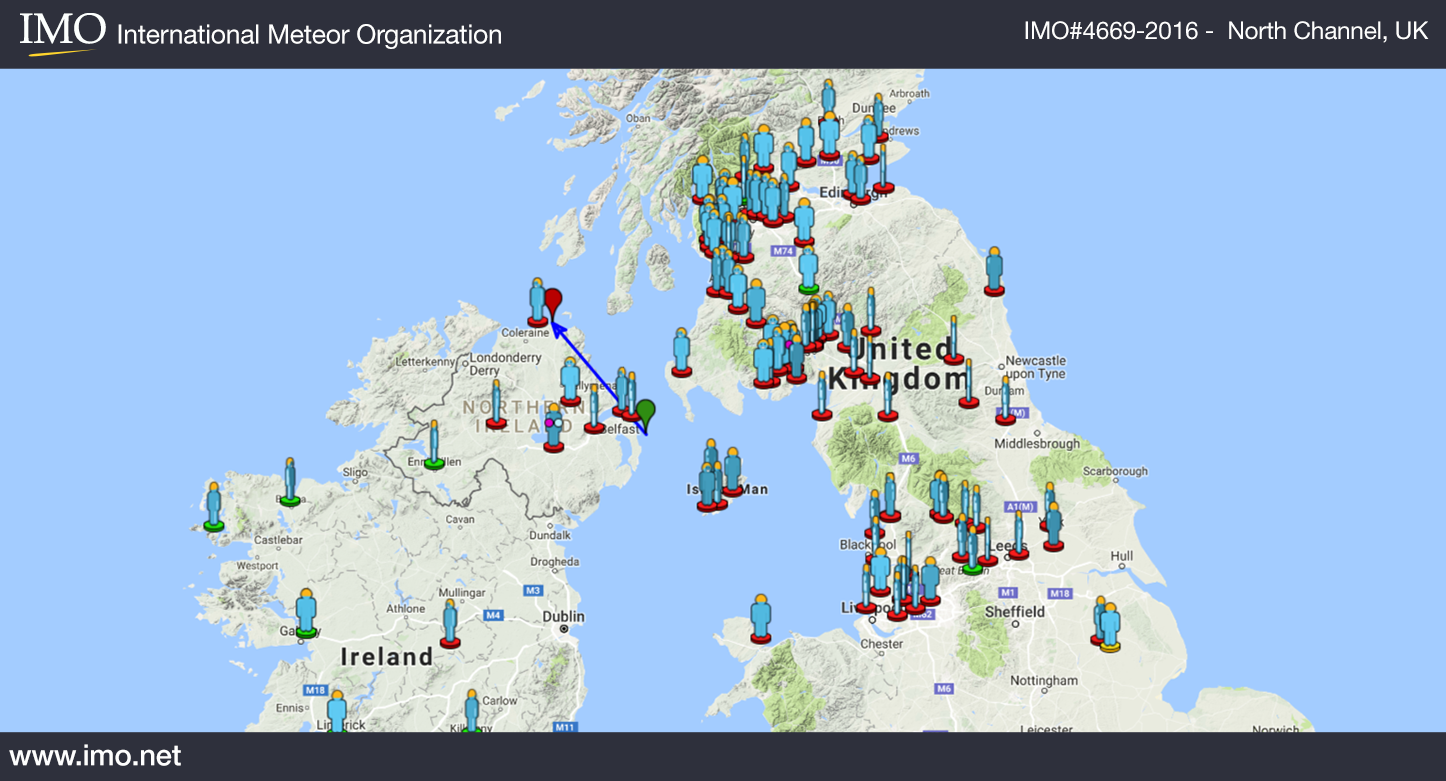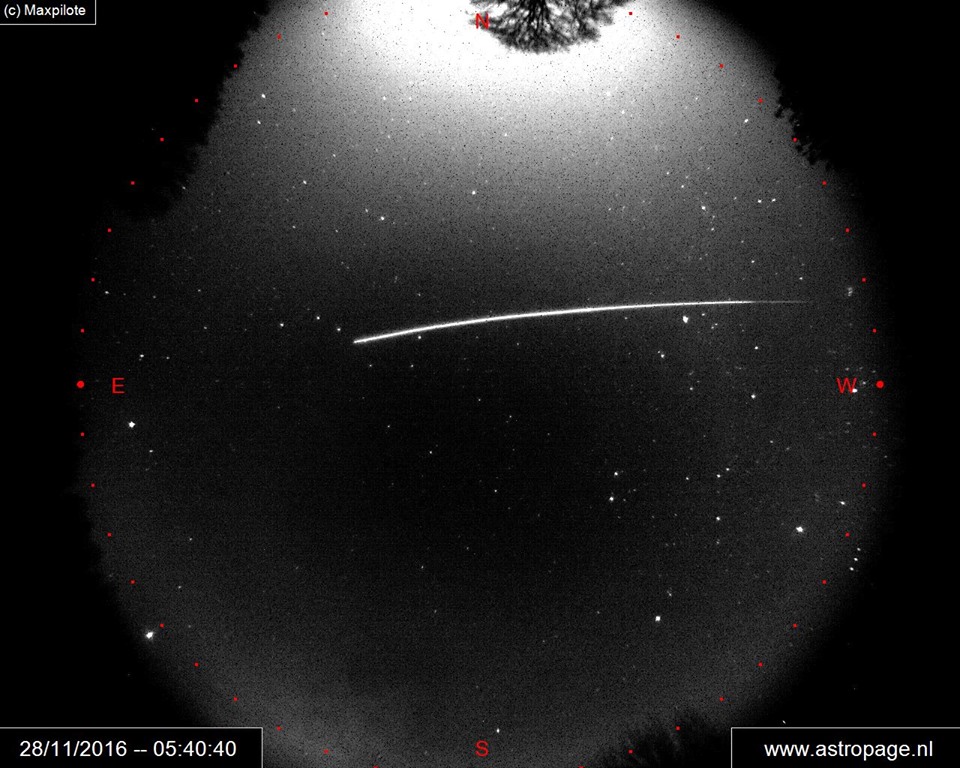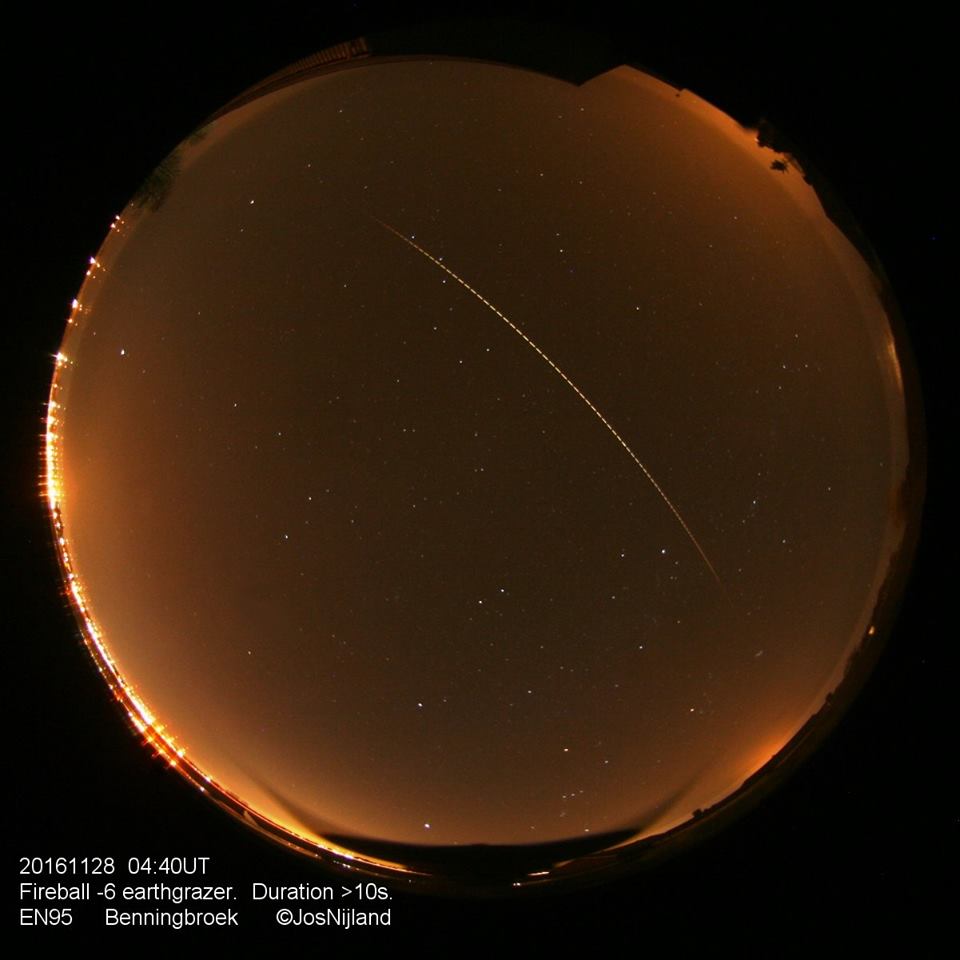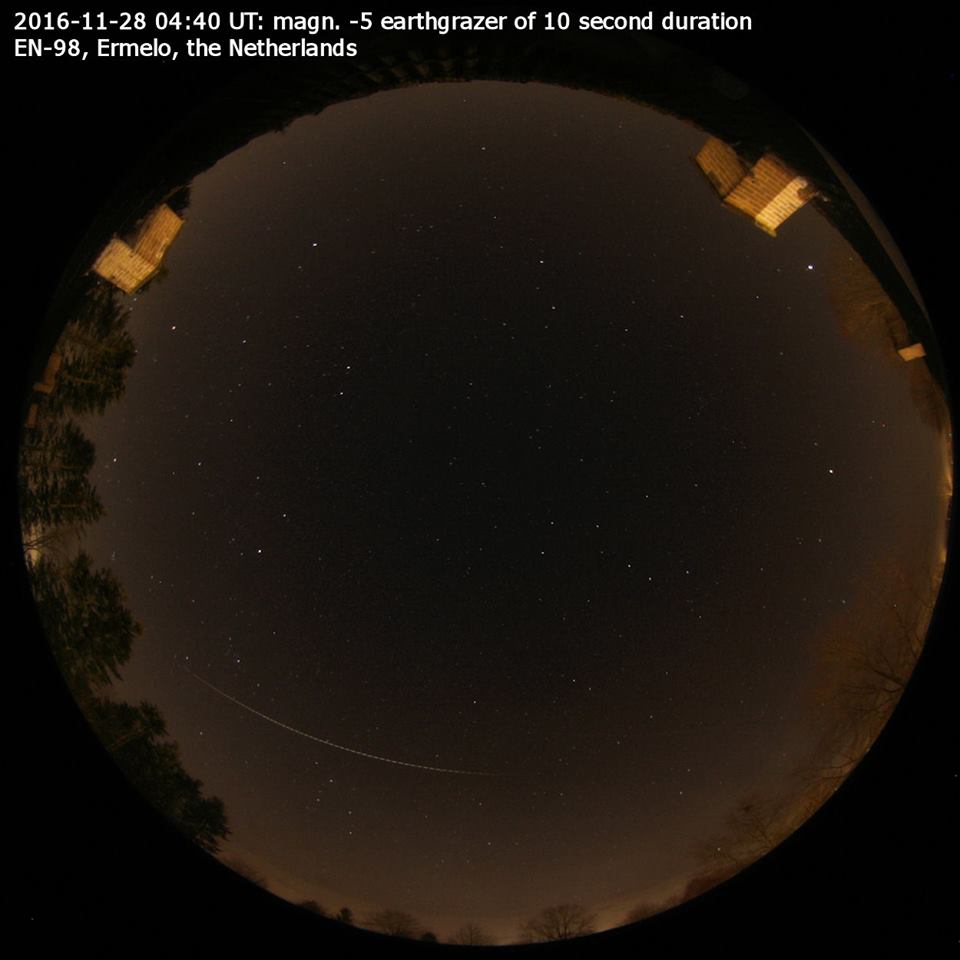During the last week, three major fireballs lit up the skies in different parts of the world. Here is some information about these recent events!
The first huge fireball was filmed and widely observed (over 200 reports received on the IMO/AMS fireball report form) over Florida, but also from Southern Georgia and Alabama, on November 22nd, 2016 at 04h 17m UT (November 21st, 2016, 11:17pm EST).

Below is a compilation of video records of the event made by the AMS (American Meteor Society):
Based on the reports, the meteoroid was traveling from the Southeast to the Northwest and ended its flight about 70 km West from Florida’s coasts, above the Gulf of Mexico. Its sharply inclined trajectory (<22° inclination relative to the vertical) explains the very short ground South to North (347° azimuth) projected trajectory (~22 km long) for a real trajectory that was ~60 km long. The meteor featured numerous light outbursts all along the visible trajectory which ended at a ~25 km altitude. Residual meteorites (if any) must thus lie at the bottom of the Gulf of Mexico!
A second fireball was reported by more than 120 witnesses over the United Kingdom and Ireland, on November 23rd, around 17h 18m UT. Unfortunately, due to bad weather none of the camera of the UKMON network have caught the event. But all the eye-witness reports allow to draw a rough trajectory of the meteoroid while it entered the atmosphere. According to the automatic calculations, taking into account all observations, the fireball’s flight occurred above Northern Ireland, with a South-Eastern to North-Western trajectory (320° azimuth). The entry angle relative to the horizontal of the meteoroid was far smaller than this of the Florida fireball, and the extinction altitude, around 50 km, would not favor the hypothesis of remaining meteorites, which would, anyway, finish their fall North of Ireland, in the Atlantic ocean.

Last, but not least, a very bright and long-lasting (more than 12 seconds!) -6mag Earthgrazing meteor (a meteor associated to a meteoroid whose trajectory has a very low entry angle with the Earth’s atmosphere) appeared over the Netherlands sky on November 28th, at 04h 40m UT, impressing people that were able to observe it. Contrary to the previous event, this spectacular fireball was not as largely observed, but it was caught on videos and visually observed by experienced meteor observers like Koen Miskotte, Jos Nijland and Marco Verstraaten (see pictures below). Be aware another long-lasting fireball was observed and filmed over Denmark on the same day, but at 18h 25m UT: those two events are different and uncorrelated!
After preliminary analysis of 2 video records (out of the 7 which were recorded), Marco Langbroek estimates the meteor path to be ~180 km long, starting at ~75 km altitude, to disappear when the meteoroid was ~40 km high.







 You saw something bright and fast? Like a huge shooting star? Report it: it may be a fireball.
You saw something bright and fast? Like a huge shooting star? Report it: it may be a fireball.  You counted meteors last night? Share your results with us!
You counted meteors last night? Share your results with us!  You took a photo of a meteor or fireball? You have a screenshot of your cam? Share it with us!
You took a photo of a meteor or fireball? You have a screenshot of your cam? Share it with us!  You caught a meteor or fireball on video? Share your video with us!
You caught a meteor or fireball on video? Share your video with us!